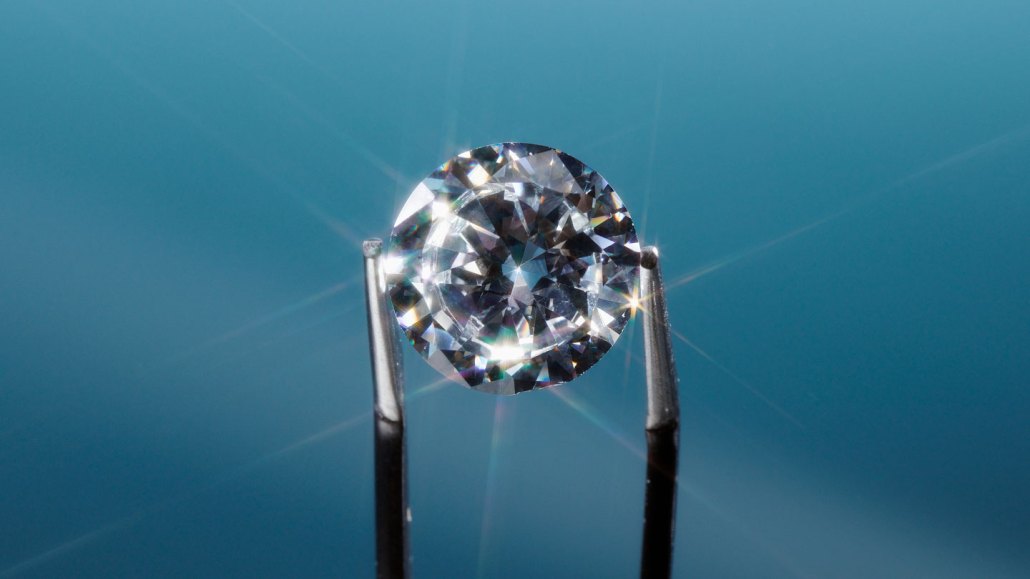Let’s learn about diamond
It takes some pretty extreme conditions to forge this superstrong mineral

Diamond is made of carbon atoms, just like the common graphite in your pencil lead. What sets diamond apart is the crystal arrangement of its carbon atoms.
Jeffrey Hamilton/Getty Images
Share this:
- Share via email (Opens in new window) Email
- Click to share on Facebook (Opens in new window) Facebook
- Click to share on X (Opens in new window) X
- Click to share on Pinterest (Opens in new window) Pinterest
- Click to share on Reddit (Opens in new window) Reddit
- Share to Google Classroom (Opens in new window) Google Classroom
- Click to print (Opens in new window) Print
At a glance, diamond and graphite are totally different. Diamond is a precious gem reserved for fancy jewelry. Graphite is found in common pencil lead. Yet diamond and graphite are made of the same stuff: carbon atoms. The difference is how those atoms are arranged.
The sheets of carbon atoms in graphite peel apart easily. That’s why graphite rubs smoothly off the tip of a pencil and onto paper. In diamond, carbon atoms are locked together in a crystal lattice. That rigid pattern, which is the same in all directions, gives diamond its strength and durability.
Forging diamond requires high heat and pressure. Those conditions are found deep inside Earth’s mantle — at least 150 kilometers (93 miles) below ground. Some “super-deep” diamonds may be born as deep as 700 kilometers (435 miles) down. Diamonds ride to Earth’s surface through volcanic eruptions. Those gems retain their crystal structure even under the much lower pressures found above ground. And lab experiments show these minerals hold up under super high pressures, too. Diamonds don’t buckle even under five times the squeeze felt at Earth’s core.
Earth isn’t the only place to form diamonds. Gems found in one space rock may have been forged inside a planet that broke apart in the early solar system. Diamonds are also born under the intense heat and pressure of violent collisions. Mercury may be covered with diamonds due to meteorites flash-baking its carbon crust into crystal. If so, that planet may host a stockpile of diamonds many times the size of Earth’s.
Want to know more? We’ve got some stories to get you started:
Rare blue diamonds form deep, deep, deep inside Earth The recipe for rare blue diamonds may include boron, seawater and massive rock collisions. (9/5/2018) Readability: 7.6
Diamonds and more suggest unusual origins for asteroids Diamonds found in one asteroid may have formed deep inside a Mars- or Mercury-sized planet that got smashed in the early days of the solar system. (6/19/2018) Readability: 8.0
Extreme pressure? Diamonds can take it Diamond retains its structure even at extreme pressures, which could reveal how carbon behaves in the cores of some exoplanets. (2/19/2021) Readability: 7.5
Explore more
Explainer: Earth — layer by layer
Explainer: In chemistry, what does it mean to be organic?
Smash hit: Making ‘diamond’ that’s harder than diamonds
Beyond diamonds: Search is on for rare carbon crystals
Mercury’s surface may be studded with diamonds
Why we should stop ignoring the life stories of minerals
Chemists have created a ring-shaped form of carbon
Activities
Looking for a cool, indoor activity out of the summer heat? Visit a local museum to see diamonds and other exotic minerals in-person. Don’t have easy access to a museum nearby? Take a virtual tour of the National Museum of Natural History’s Hall of Geology, Gems and Minerals.







